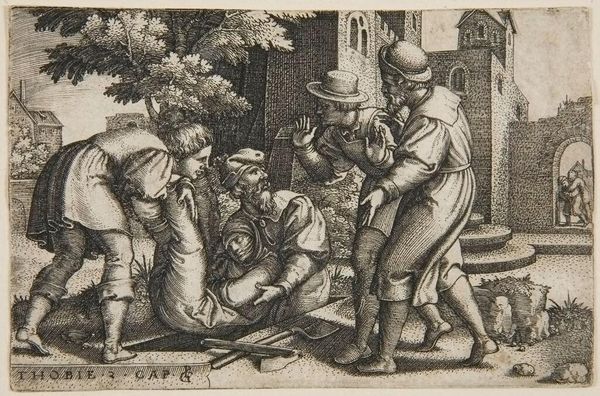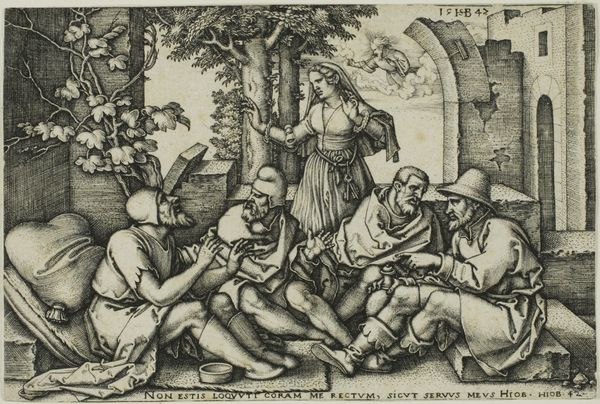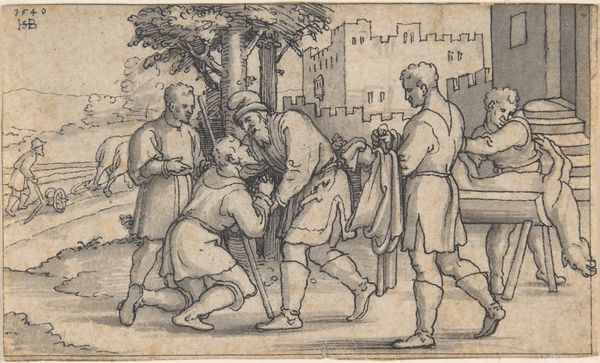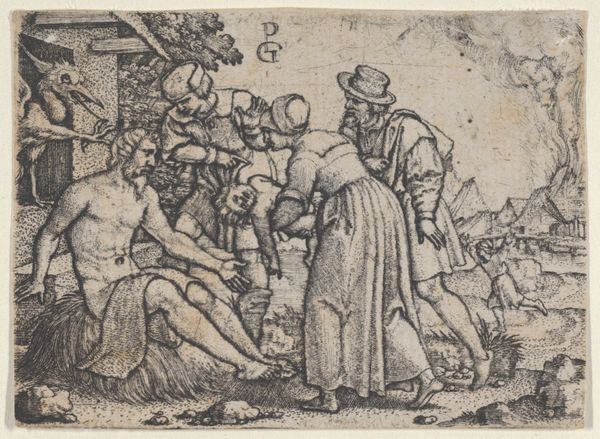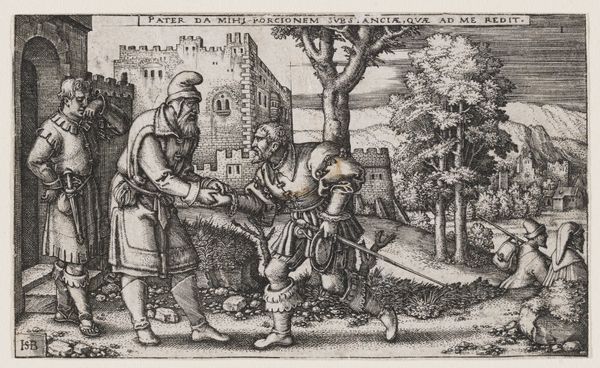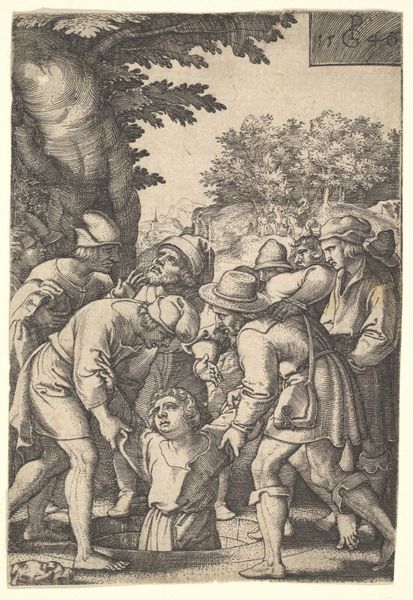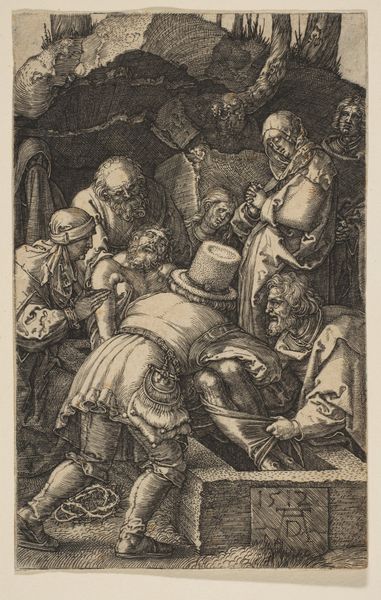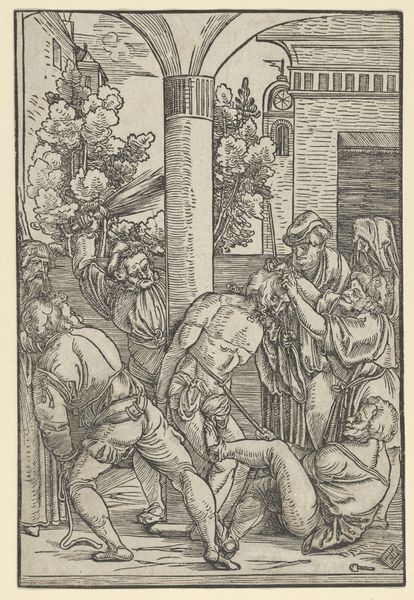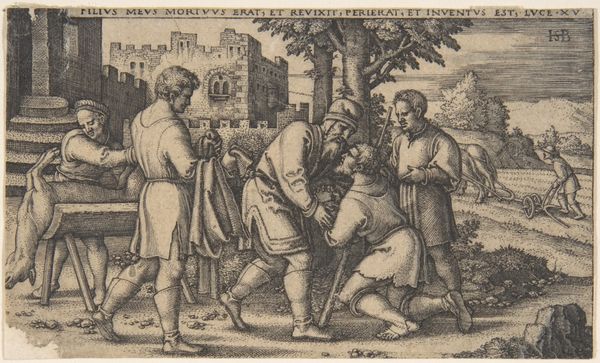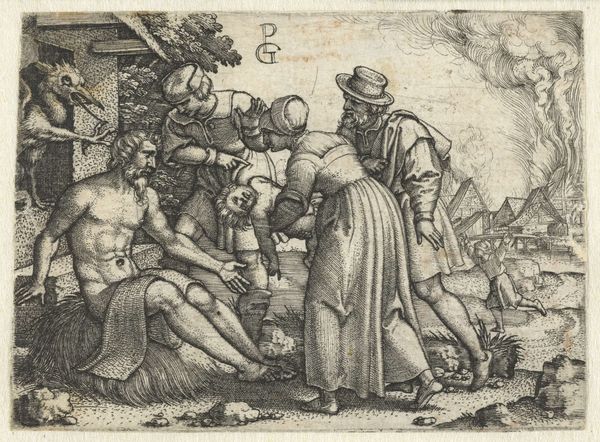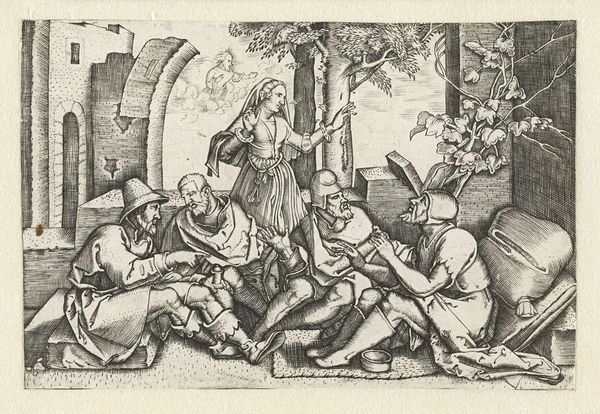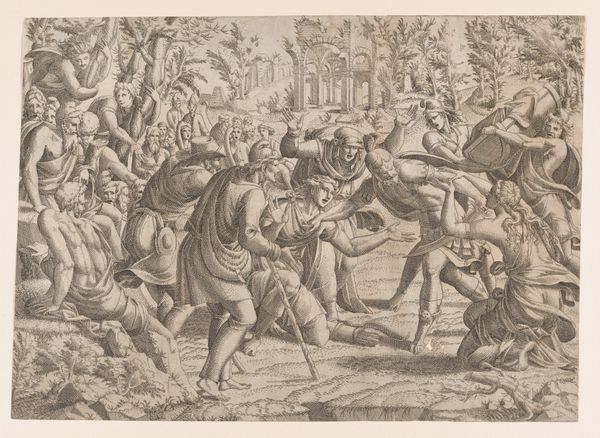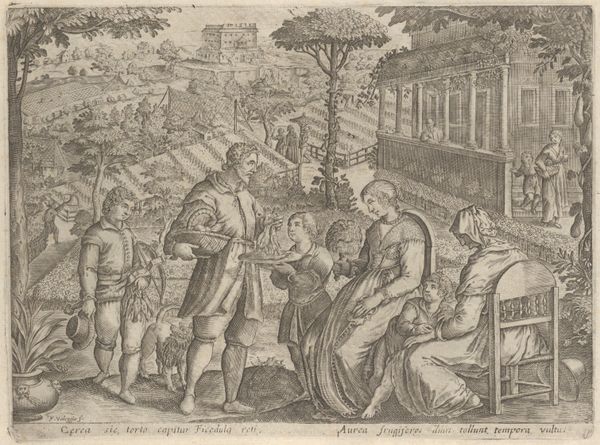
print, etching, engraving
#
toned paper
#
narrative-art
# print
#
etching
#
figuration
#
history-painting
#
northern-renaissance
#
engraving
Dimensions: plate: 6.4 x 9.9 cm (2 1/2 x 3 7/8 in.) sheet: 6.5 x 10 cm (2 9/16 x 3 15/16 in.)
Copyright: National Gallery of Art: CC0 1.0
Curator: This etching, dating to 1543, is entitled "Tobias Burying One of the Children of Israel" and was created by Georg Pencz. It’s a compelling example of narrative art from the Northern Renaissance, printed on toned paper. Editor: Whoa, that’s intense! It's got a sort of chaotic harmony, if that makes sense. All these busy lines converging on the slumped figure—kind of unsettling but draws you right in. Curator: Absolutely. Pencz places us in the fraught historical context of clandestine burial, which would have carried great risks. The etching gives visual form to issues of identity, community resilience, and religious persecution during the Reformation. Editor: See, I just saw sadness and that weird theatrical gesturing of the guys on the right. But you’re right, now I think about it, there's a nervous energy—those gesturing hands, like they're trying to keep watch while mourning, all under a judgmental looking medieval sky. Is that dramatic or what? Curator: Indeed. Consider how Pencz's use of etching emphasizes the furtive, hurried nature of the scene. Look closely at the detail of the landscape; even that seems to mirror a kind of agitated unrest. Pencz wasn't merely illustrating a scene; he was inviting commentary on social order. Editor: It’s like looking at a secret whispered in shades of gray. I keep wanting to reach out and smooth the worries etched on their faces. But it's more than the line work, I think it's how Pencz captures the mood of carrying that secret history within the work itself, somehow…heavy! Curator: It's a fascinating piece that shows us, beyond any historical record, the materialization of anxiety, the heavy cost of compassion. Pencz allows us entry into the clandestine activities, turning this very print into a powerful testimony of solidarity. Editor: Definitely makes you think about who’s doing the burying and what we bury today. A sobering echo across time.
Comments
No comments
Be the first to comment and join the conversation on the ultimate creative platform.
